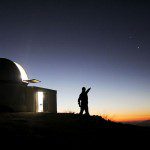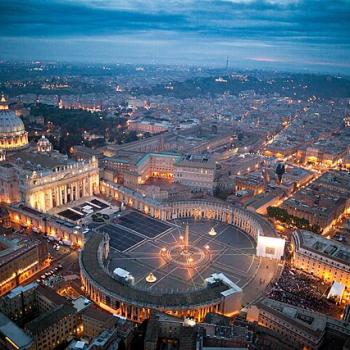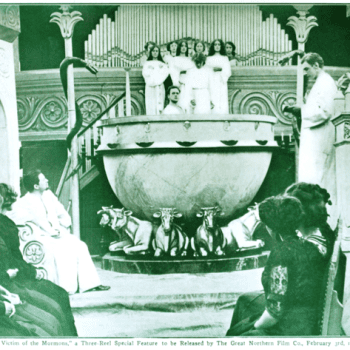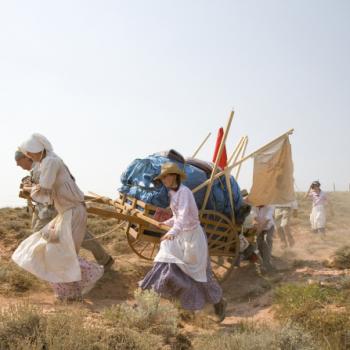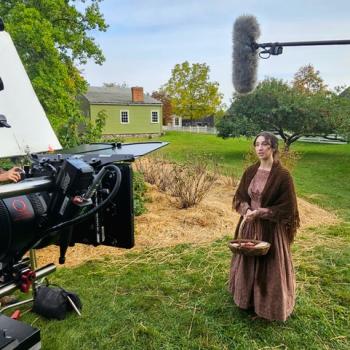
Tomorrow is Pioneer Day — a legal holiday in Utah, but an anniversary that is observed, in one way or another, by many Latter-day Saints beyond the borders of my adopted home state. (Please see my 21 July 2023 article in Meridian Magazine.) On Saturday, 22 July, after joining the audience for the annual Pioneer Day parade in Cokeville, Wyoming, my wife and I were the speakers in the church there for their Pioneer Day program.
We drove up to Cokeville with neighbors of ours. (I’m grateful to them for their friendship, but I tend not to mention the names of my children, my kinfolk, and my friends here because I don’t want them to become targets of the routine online abuse and anonymous daily hate mail that I receive. Sorry.) The husband grew up in Cokeville in a large ranching family, and he still seems to know everybody there in the town and to be related to half of them; it was, accordingly, great fun being in their company.
We had an early dinner at the Gold Buckle Grill in Cokeville, which is owned and run by members of our neighbors’ family. Great food. We drove around the family ranch, and up along Spring Creek (I think) into the nearby mountains. Beautiful country, multiple small waterfalls, and transparently clear water. Then we dropped by the home of one of our host’s sisters, who was a second-grade teacher at the nearby Cokeville Elementary School on 16 May 1986. That was the day on which David Young and his wife, Doris, seized the school with weapons and a crude home-made bomb, taking its young students and its staff hostage. The remarkable conclusion of that terrifying story is what is widely (and justly) known as “the Cokeville Miracle.”
She told us the story of that event from her perspective. I’ve heard various accounts before, I’ve read about it, and I’ve seen the movie by T. C. Christensen, which she endorsed as accurate — but it was a very special experience to hear it from one of those who were centrally involved, and to be able to discuss it with her. Another sister, whom we’ve come to know over the years, was also there with us in the living room. She is the widow of the late Elder L. Tom Perry, who served in the Quorum of the Twelve Apostles from 1974 until his death in 2015. She and Elder Perry were driving on an assignment in Northern California when they heard the news on the car radio. They pulled over to pray. They couldn’t get through by telephone for about twenty-four hours, but they heard reports that a teacher had been shot, and they wondered, with deep concern, whether it had been her sister. It wasn’t, and the teacher who was shot recovered.
Because of Sister Perry’s connection to Cokeville, Elder Perry visited multiple times during their Pioneer Day festivities. And he eventually began to bring other General Authorities with him, who frequently served as the grand marshals of their modest parade. (I grew up near Pasadena, California, where the annual Rose Parade is held on Colorado Boulevard, so just about any other parade is likely to be modest by comparison. But Cokeville’s is genuinely modest. Happily, spectators are able to see it not just once, but twice: It goes up Main Street one way, and then it turns around and comes back the other direction. And kids in the audience bring large bags, because those riding in the parade toss vast amounts of candy to them — the largest volume of candy per capita, one onlooker told me, of any parade in the world.) Russell M. Nelson, Dallin H. Oaks, N. Eldon Tanner, Bruce R. McConkie . . . I’m told that about thirty General Authorities have participated in the town’s celebration over the years.
The small population of Cokeville expands considerably on the weekend of its annual Pioneer Day celebration, and the town has only one small motel. Accordingly, we stayed with the in-laws of the bishop, enjoying conversation with them and visiting members of their family and another guest before bedtime. One of the best aspects of the speaking engagements I’ve had in the Church has been meeting absolutely wonderful people around the world; I can testify that Cokeville offers an abundance of them. (One of the other folks that we met several times was Stewart Petersen, whom some readers may recall from such films as Where the Red Fern Grows (1974), Seven Alone (1974), Against a Crooked Sky (1975), and The First Vision (1976).)
Next morning’s parade — which, for us, followed a delicious pancake breakfast prepared by the bishop’s venerable mother-in-law, who, with her husband, has served four Church missions (including two in Western Samoa) — was really fun. As we watched the equestrian group gather itself together, with its flags and high school cowgirls, my wife commented to me that small towns like Cokeville may well represent the very best of America. And, truly, it seemed that way on Saturday morning.
At 11:00 AM, we gathered in the chapel for the Pioneer Day program. The stake president presided; the bishop conducted. Our neighbor’s former-teacher sister conducted the music. Sister Perry sat on the front row. They are extraordinarily kind people. Behind those of us seated on the stand were two very large Minerva Teichert paintings. They’re reproductions now; the originals have been taken to Salt Lake City (which has not, to put it mildly, pleased everybody in town). Minerva Teichert (1888-1976) spent most of her adult life in Cokeville, and she is buried in the town’s cemetery.
My wife told a pioneer story from her own family, somewhat connected with the famous Willy and Martin handcart companies. Then I took the remainder of the time.
During my remarks, I encouraged members of the audience to spend just six minutes watching what, to me, is a remarkably moving and inspirational little production — and I encourage you to do it, as well: “Cameroon Latter-day Saints Journey to Aba Nigeria Temple.”
The spirit of the nineteenth-century Mormon Pioneers — their devotion, their dedication — is still alive.
To make my point, and with his permission, I drew for some of my illustrations on the work in the Democratic Republic of the Congo that has been done by my friend and Interpreter Foundation colleague Jeffrey Mark Bradshaw. If all goes well, a roughly eight-minute preview or “teaser” of that work, based on images and stories gathered with the help of filmmakers James Jordan and Russell Richins, will be shown — once daily, I think — during the rapidly approaching FAIR conference.
After the program, our neighbors took us on a Minerva Teichert art-walk through the chapel. There are some beautiful paintings of hers — reproductions, now — in the Relief Society and in the hallways. She used local models in her work; local residents can identify them still. One painting includes the then-serving bishopric of Cokeville. She repeatedly used our neighbor’s father, the bishop and then the stake president over Cokeville, as her model for Jesus. Not, she said, because of his appearance but because he was “the most Christ-like man” she knew.
There is a new exhibit at the Church’s museum to the west of Temple Square. I would have seen it anyway, but now I’m even more interested than I was before: “Church History Museum Opens Exhibition Celebrating the Art and Faith of Minerva Teichert”



